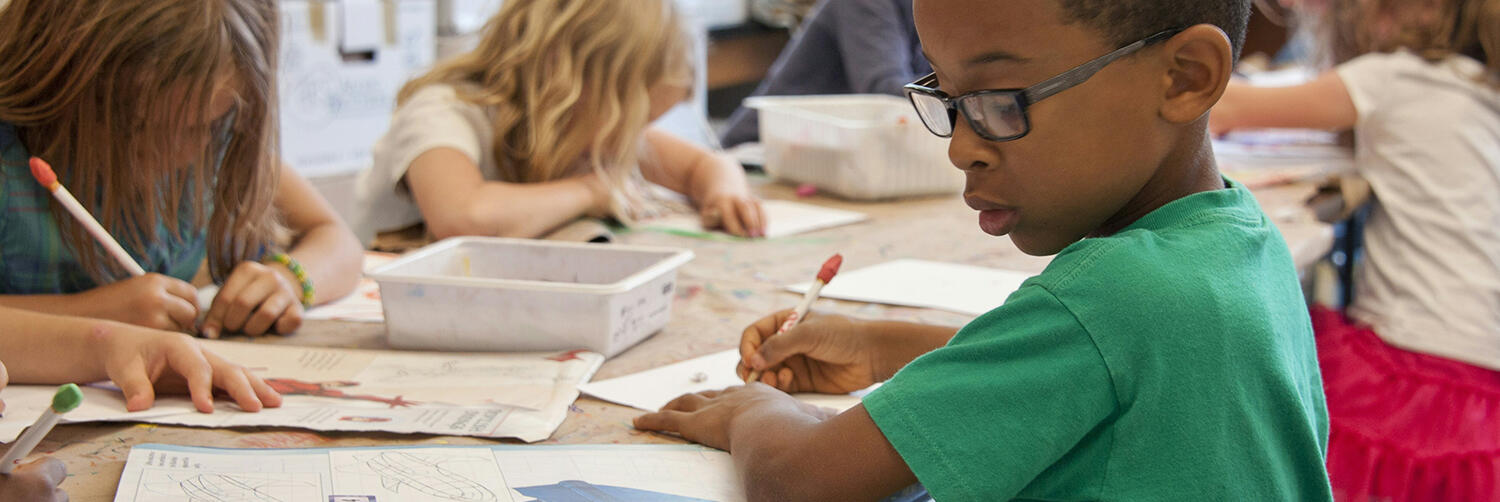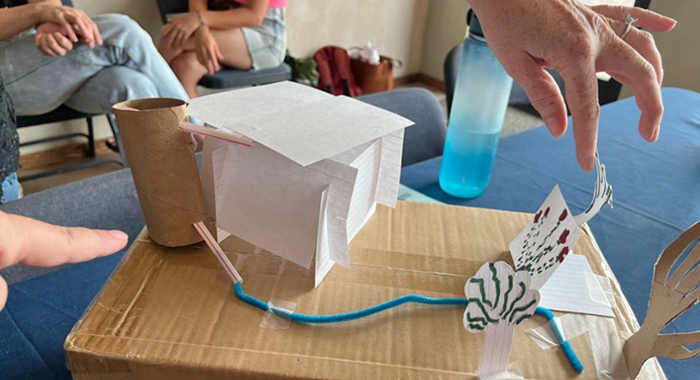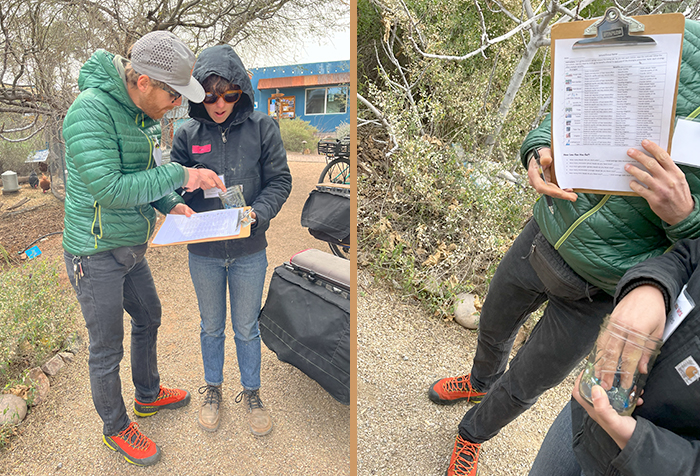
From engagement to action: How teachers are shaping the future of water literacy in Arizona
On February 8, 2025, in collaboration with ASU Walton Sustainability Teachers Academy, we brought together 26 skilled educators from across Arizona for a workshop focused on increasing students’ water literacy. Participating teachers provided invaluable feedback on the Water Literacy in the Desert, K–12 curriculum that we designed with teachers to prepare students to understand and address the complex water challenges facing our state.
This workshop was a milestone for the project, which we launched in 2024 as part of ASU’s Arizona Water Innovation Initiative and with generous support from its Impact Water – Arizona program.
At its core, Water Literacy in the Desert is about equipping students with the knowledge, skills and imagination to make sense of and act on the water issues that shape their lives. And just as important, this project is about what is possible through mutually supportive relationships between universities and K-12 schools.
Teachers know what students need
To make the curriculum relevant and actionable, our research team at ASU developed educational materials that align with Arizona State Standards. We drew heavily on insights that our partner teachers provided, and these efforts paid off.
One of the key findings of the workshop was that the curriculum’s real strength lies in how adaptable and interdisciplinary it is. Teachers told us they could see themselves using it in chemistry, environmental science, STEM, art, English and even after-school programs.
One teacher described it as a perfect fit for their high school eco-audit project, while another noted how it could strengthen an existing unit on chemical reactions and molecular polarity. Others saw it as a way to connect water to topics students are already interested in.

For example, one teacher told us, “Students are already doing capstone projects about water accessibility, Indigenous farming and fast fashion. This [curriculum] gives them something tangible to work with.”
We heard again and again that the material resonates because it connects to what students care about. Water is tied to climate justice, culture, access and everyday life. The curriculum gives teachers an additional platform to explore those connections in ways that are grade-appropriate, grounded and hopeful.
What teachers loved, and what they need
The feedback from the workshop was overwhelmingly encouraging. Nearly every participant described the materials as useful, engaging and appropriate for their students. Many said they were excited to implement lessons right away or use them as extensions to existing units.
But they also gave us thoughtful and specific feedback on how to make it better. Some asked for more vivid visuals and video clips to better engage students in middle and high school classrooms where youth are used to fast-paced, media-rich content. Another common suggestion was that the curriculum should be easily adaptable to teachers’ unique context.
Several elementary teachers requested literary pairings or nonfiction reading passages to help align with English Language Arts standards. Others suggested using tools like Kahoot!, an ASU College of Global Futures partner, or classroom debates to keep students active and energized.

Our team noted important feedback from teachers who wanted more integration of regional knowledge. They are seeking a curriculum that centers and celebrates local plants and animals, desert farming practices, water conservation techniques and culturally relevant resources.
We walked away from the workshop with helpful, actionable and inspiring suggestions. The teachers showed us just how deeply Arizona educators are already thinking about sustainability, and how ready they are to run with a curriculum that supports those conversations.
From lessons to leadership
One of the most energizing parts of the day was seeing how teachers were already thinking beyond their individual classrooms. They talked about how to use the lessons as part of year-long projects, after-school enrichment, community-based campaigns and capstone experiences.
Some suggested activities like engineering a water filtration system, designing conservation campaigns for their neighborhoods or exploring the indirect water use of items like clothing and phones. One teacher noted, “It’s not about blaming people for long showers. It’s about helping students understand the systems that shape water use and how they, as individuals, can influence those systems.”
We want students to feel empowered, not overwhelmed. And based on what we heard, teachers are already making that happen.
Celebrating the desert
One recurring theme in our discussions was the need to celebrate the Sonoran Desert as a living, resilient and complex system. While the current curriculum includes a place-based framing, teachers pushed us to go further. They asked for more content on creosote and saguaro adaptations, groundwater dependence, rainwater harvesting and Indigenous land and water practices.
One suggested starting with a phenomenon, like the Navajo Nation’s water access crisis, to ground the learning in empathy and urgency. Another asked for videos of monsoons to help students emotionally connect with the beautiful, poetic drama of our desert climate.
Teachers also recommended local partners for future collaboration or field trips, including the Desert Botanical Garden, Tucson Village Farm, the Watershed Management Group, SRP and APS. Their suggestions were excellent reminders that partnerships and relationships are key to accomplishing our ambitious sustainability goals.
Building it together
What makes this project meaningful is the way it centers collaboration. From the start, we’ve approached Water Literacy in the Desert as something built with teachers. We seek to listen closely, iterate together and ground every decision in what works in classrooms.
Our team has always known and valued the importance of co-designing these resources with teachers rather than producing them in isolation for teachers. The workshop made it abundantly clear just how essential teacher insight is to this process.
We created the Water Literacy in the Desert project because of how inspired we are by Arizona educators. Through this collaboration, they helped shape the curriculum that we will share freely with teachers around the world. From making lessons more adaptable and visual, to suggesting new resources and extensions, the educators who joined us are true co-creators in this work.
This kind of university-school partnership is what makes sustainable change possible. It’s built on trust, dialogue and shared investment in preparing students for the complex water realities they are currently living and will inherit.
And none of this would be possible without the support of Impact Water – Arizona and the Arizona Water Innovation Initiative, whose vision and funding have made it possible to bring educators and researchers together with a shared, common purpose.
The future of Water Literacy in the Desert
We are currently conducting a research study on student and teacher experiences with the curriculum in several Arizona schools. Thus far, we are seeing an encouraging increase in students’ water literacy before and after completing the lessons. By the end of the study, we plan to make the curriculum materials freely accessible online including editable lesson plans, student activities, and, possibly, video walkthroughs to support educators across the state.
We’re also exploring partnerships for wider dissemination through educator platforms, newsletters, and social media groups. Our goal is to make this curriculum available, easy to find, easy to use, and easy to adapt.
This is just the beginning. With continued collaboration, we believe Water Literacy in the Desert can become a model for place-based sustainability education across the region.
To the educators who joined us: Thank you. Your ideas, insights, and generosity are what make this work possible.
To the students who will use this curriculum: We hope you enjoy it, and we can’t wait to see what you’ll do with it.
About the author: Janna Goebel is Assistant Professor of Sustainability Education in the College of Global Futures, School of Sustainability and Program Lead for Sustainability Education in the Center for Biodiversity Outcomes at Arizona State University. She co-leads Water Literacy in the Desert with her colleague Marco Janssen and collaborates with students Emily Núñez-Eddy and Caitlin Clark on the project.
Related stories: